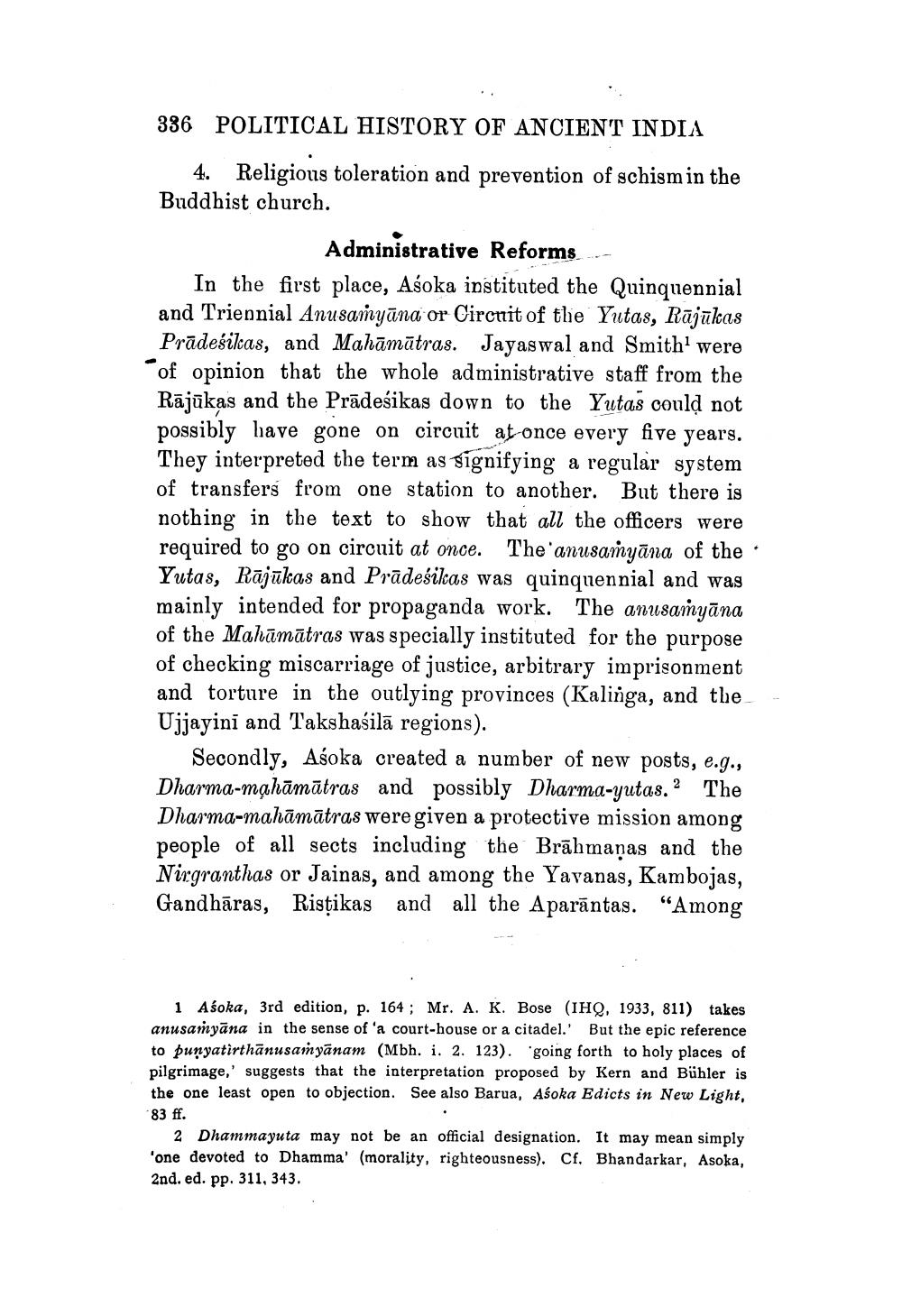________________
336 POLITICAL HISTORY OF ANCIENT INDIA
4. Religious toleration and prevention of schism in the Buddhist church.
Administrative Reforms In the first place, Aśoka instituted the Quinquennial and Triennial Anusamyāna or Circuit of the Yutas, Rājūkas Prādesilas, and Mahāmātras. Jayaswal and Smith' were of opinion that the whole administrative staff from the Rājākas and the Prādesikas down to the Yutas could not possibly have gone on circuit at once every five years. They interpreted the term as signifying a regular system of transfers from one station to another. But there is nothing in the text to show that all the officers were required to go on circuit at once. The anusamyāna of the Yutas, Rājūkas and Prādeśikas was quinquennial and was mainly intended for propaganda work. The anusamyāna of the Mahāmātras was specially instituted for the purpose of checking miscarriage of justice, arbitrary imprisonment and torture in the outlying provinces (Kalinga, and the Ujjayini and Takshasilā regions).
Secondly, Asoka created a number of new posts, e.g., Dharma-mạnāmātras and possibly Dharma-yutas.? The Dharma-mahāmātras were given a protective mission among people of all sects including the Brāhmaṇas and the Nirgranthas or Jainas, and among the Yavanas, Kambojas, Gandhāras, Ristikas and all the Aparāntas. “Among
1 Asoka, 3rd edition, p. 164 ; Mr. A. K. Bose (IHQ, 1933, 811) takes anusamyāna in the sense of 'a court-house or a citadel.' But the epic reference to punyatirthānusamyānam (Mbh. i. 2. 123). 'going forth to holy places of pilgrimage,' suggests that the interpretation proposed by Kern and Bühler is the one least open to objection. See also Barua, Asoka Edicts in New Light, 83 ff.
2 Dhammayuta may not be an official designation. It may mean simply 'one devoted to Dhamma' (morality, righteousness). Cf. Bhandarkar, Asoka, 2nd. ed. pp. 311, 343.




